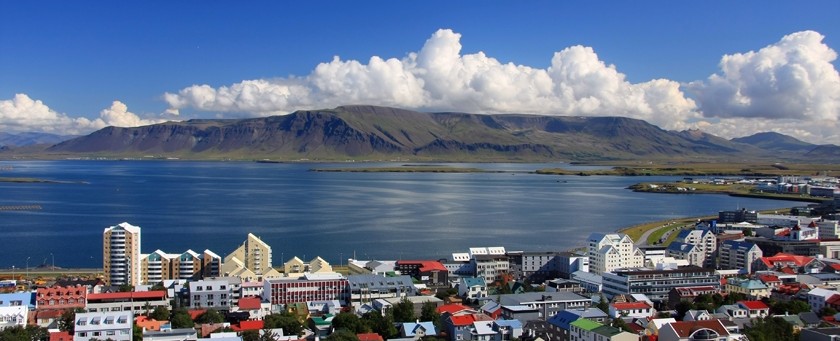Since we arrived in Iceland, we have been lucky to have so many great conversations with Icelanders and visitors of the country alike who are interested in our project and want to talk about multiculturalism in the country. Everywhere we go we are welcomed with lively conversation, and each person we speak with seems to connect us with another person we should talk to.
This past week we had the pleasure of meeting with someone from the Reykjavik City Library who has created and managed the library’s multicultural programs. She explained that her outlook on multicultural programming is somewhat different from other programs of similar title. To her, multicultural programs should include both immigrants, non-native Icelanders and native Icelanders alike. These programs aim to break down the “other” stereotype of immigrants by providing unifying programs that include both immigrants and native Icelanders. She explained that her goal in this pursuit is to challenge the “us vs. them” dichotomy that often emerges when discussing multiculturalism.
After explaining her outlook and approach, she then explained some of the main programs the library has developed and enacted in Iceland. One of the first she created is called the “Flying Carpet Project.” This project mainly takes place inside of Icelandic schools as an activity for students of all ages to express their own cultural identity and learn about the identities of their peers. Each student is asked to bring in items that illustrate their own identity and sets up a booth to display them. Parents and teachers are invited to the presentation and walk around listening to each student present their display. The library calls these presentations “intercultural gatherings.”
An important emphasis of the Flying Carpet project is that each student’s identity and culture does not need to be defined by ethnic background. Many students who grew up outside of Iceland, or whose parents or grandparents were born outside of Iceland, will bring items or flags from these places. However, this is not required. Rather, the program welcomes all students to define their cultural identity as they wish, as represented by books, toys, artwork, or any other items they choose. The goal of the Flying Carpet project is to create a welcoming, tolerant, and creative atmosphere. Teachers and parents from schools that have hosted a Flying Carpet gathering say that students feel pride and accomplishment having presented their identity to others.
Another multicultural project that we found particularly interesting was called The Women’s Story Circle. Every month women are welcome to come to the library to meet one another and share their experiences. These consciousness-raising groups allow women to connect with one another and create a network of support and friendship. The group utilizes culture and arts to help build the sense of community among the women. Currently they are partaking in a theatre workshop and in the past the group has created two paintings using the Aboriginal method of painting with dots. Both paintings are maps, one of Reykjavik and the other of the whole island. However what makes these paintings unique is the fact that the women have personalized the maps with symbols that are of significance to their lives.
As you can see, the paintings are absolutely beautiful and it is easy to understand why one of the coffee chains here in Iceland approached the women’s group and asked whether their multicultural paintings could be used as the design on their coffee bags. The group agreed with hopes that their project would shed light on how multiculturalism is a vibrant part of Iceland’s culture. Now in the coffee shop not only sells coffee with the design on the packaging, but there are postcards also available with mini biographies of each of the women in both Icelandic and their mother tongue.
Because of projects like these, the library has been making great strides towards making multiculturalism visible within Iceland. Using a variety of projects and targeting different demographics, the library has been successful in opening up the discussion to make the conversation less about simply tolerance but rather appreciation of all cultures. The woman with whom we were talking emphasized the point of these projects was not just to create a space for immigrants in Iceland, but to also to include native Icelanders into the conversation and help them feel like they are also a part of multiculturalism in Iceland. Needless to say, we were very impressed with the library’s initiative and believe there is a lot to learn from these programs in terms of multicultural education.


